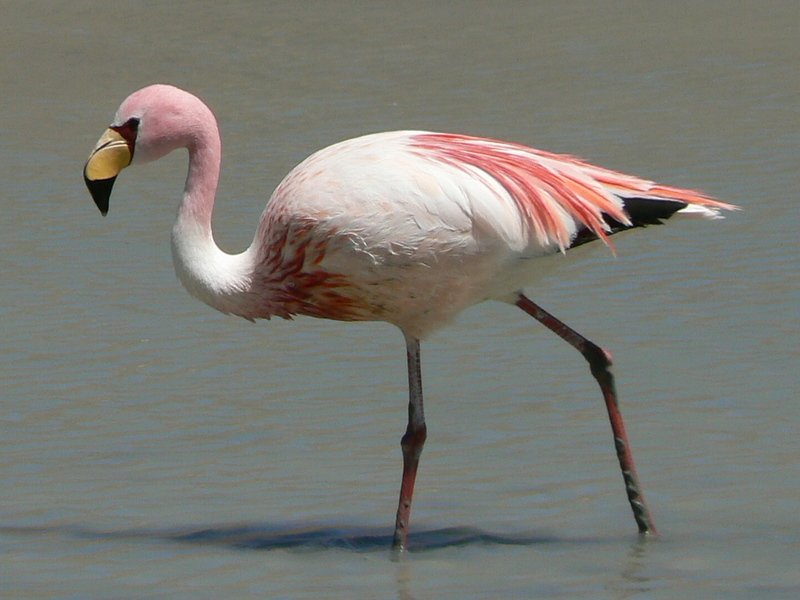|
| 질의: black back | 결과: 346번째/1141 | |
James's Flamingo (Phoenicopterus jamesi) - Wiki
| 제목: | James's Flamingo (Phoenicopterus jamesi) - Wiki
| |

| 해상도: 1600x1200
파일크기: 617774 Bytes
촬영일: 2006:12:12 09:40:08
사진기: DMC-FZ7 (Panasonic)
F number: f/2.8
Exposure: 10/6400 sec
Focal Length: 720/10
등록시간: 2008:01:04 14:34:35
|
James's Flamingo
From Wikipedia, the free encyclopedia
Order: Phoenicopteriformes
Family: Phoenicopteridae
[Photo] James's Flamingo (Phoenicopterus jamesi) at South West Circuit, Bolivia. Source: Flickr (www.flickr.com/photos/15177523@N00/322456657). Date: Taken on December 12, 2006. Author: Iain and Sarah (www.flickr.com/photos/15177523@N00/).
The James's Flamingo (Phoenicopterus jamesi), also known as the Puna Flamingo, is a South American flamingo, named for Harry Berkeley James. It breeds on the high Andean plateaus of Peru, Chile, Bolivia and Argentina. It is related to the Andean Flamingo, and the two are often placed in the genus Phoenicoparrus.
It is a small and delicate flamingo, approximately 3 feet in height. Its plumage is pale pink, with bright carmine streaks around the neck and on the back. When perched a small amount of black can be seen in the wings. There is bright red skin around the eye. The legs are brick-red and the bill is bright yellow with a black tip. Immature birds are greyish.
James's Flamingo is similar to other South American flamingoes, but the Chilean Flamingo is pinker, with a longer bill without yellow, and the Andean Flamingo is larger with more black in the wings and bill, and yellow legs.
http://en.wikipedia.org/wiki/James's_Flamingo
| The text in this page is based on the copyrighted Wikipedia article shown in above URL. It is used under the GNU Free Documentation License. You may redistribute it, verbatim or modified, providing that you comply with the terms of the GFDL. |
|
^o^
동물그림창고 똑똑전화 누리집
^o^
|
|

